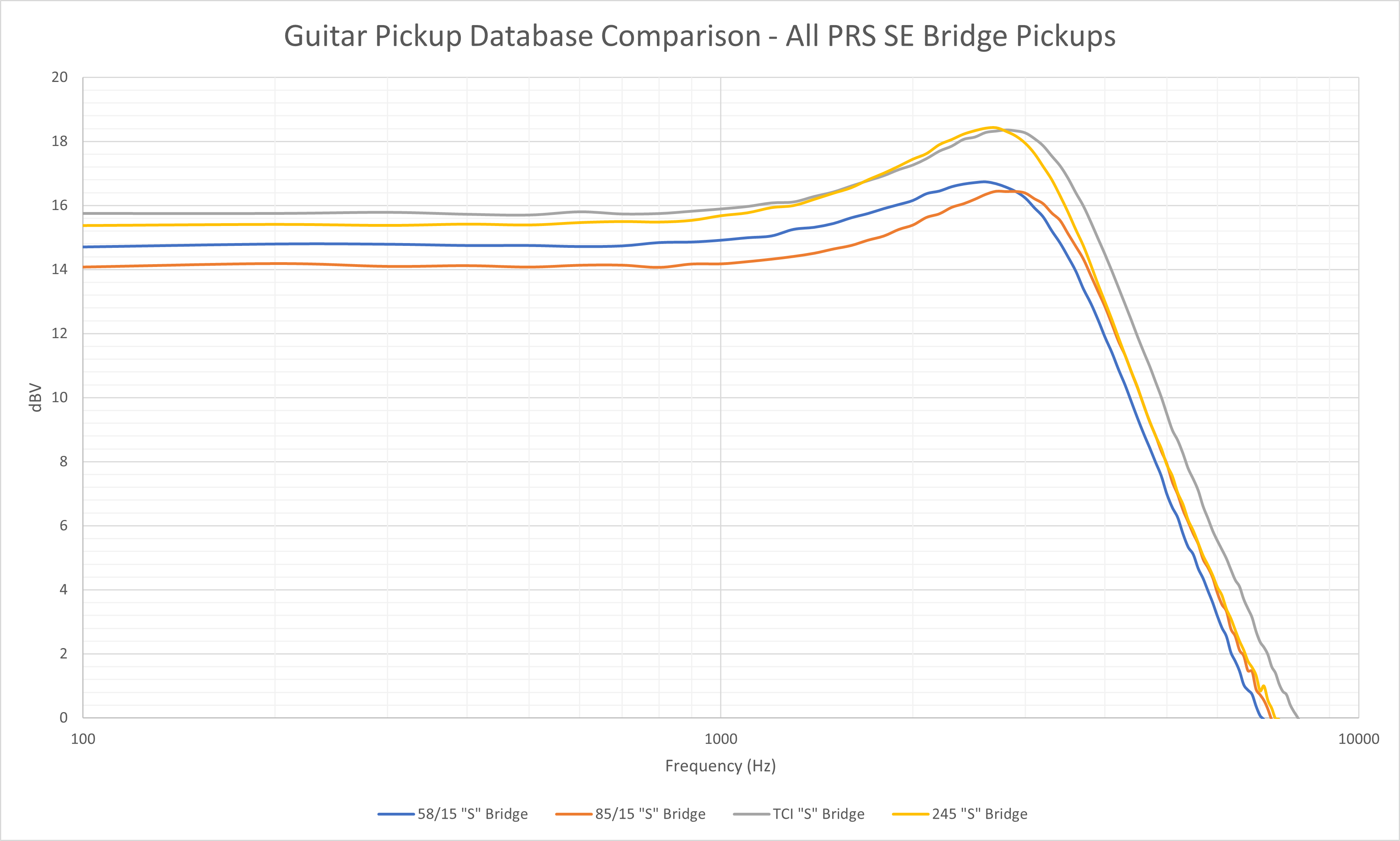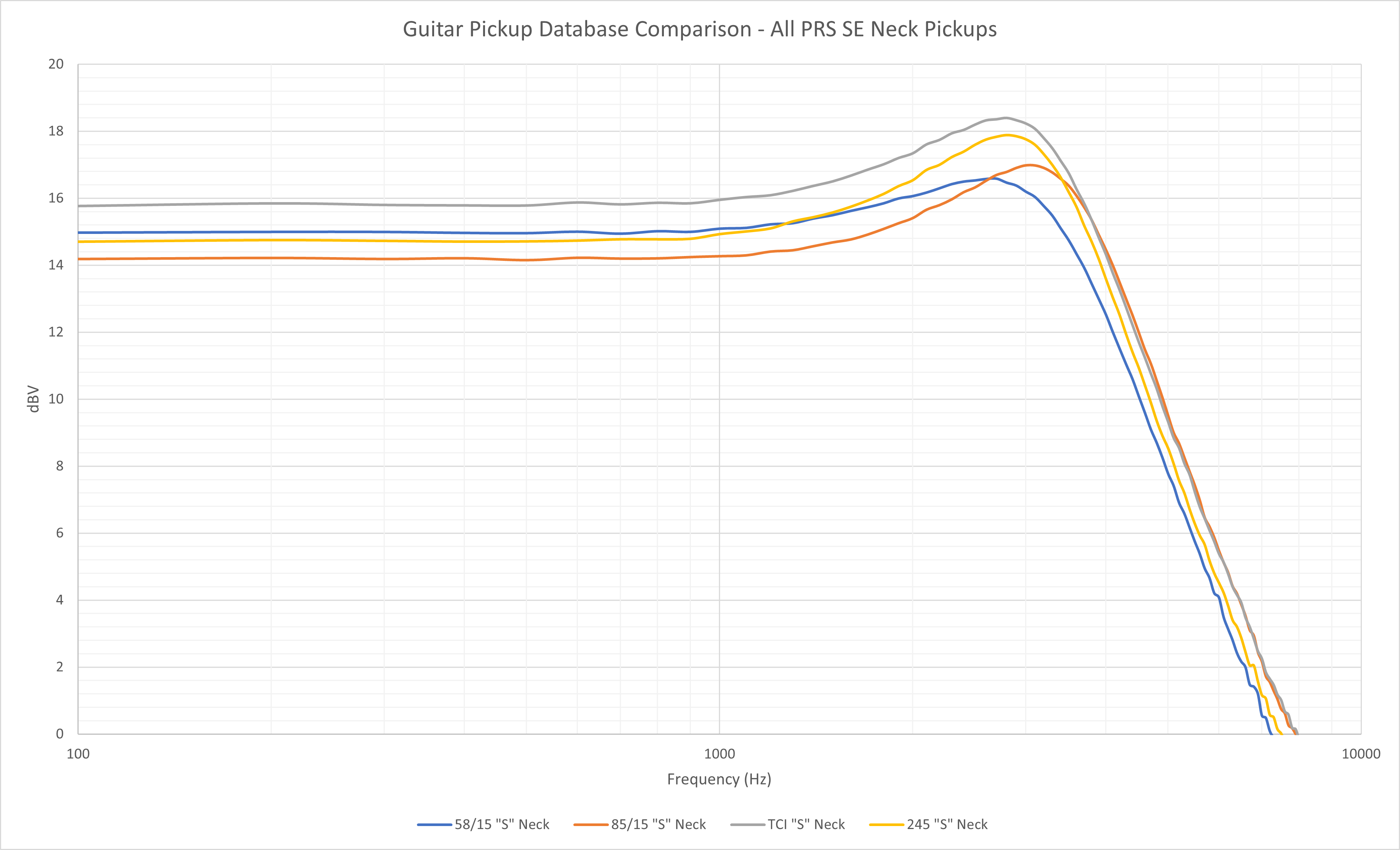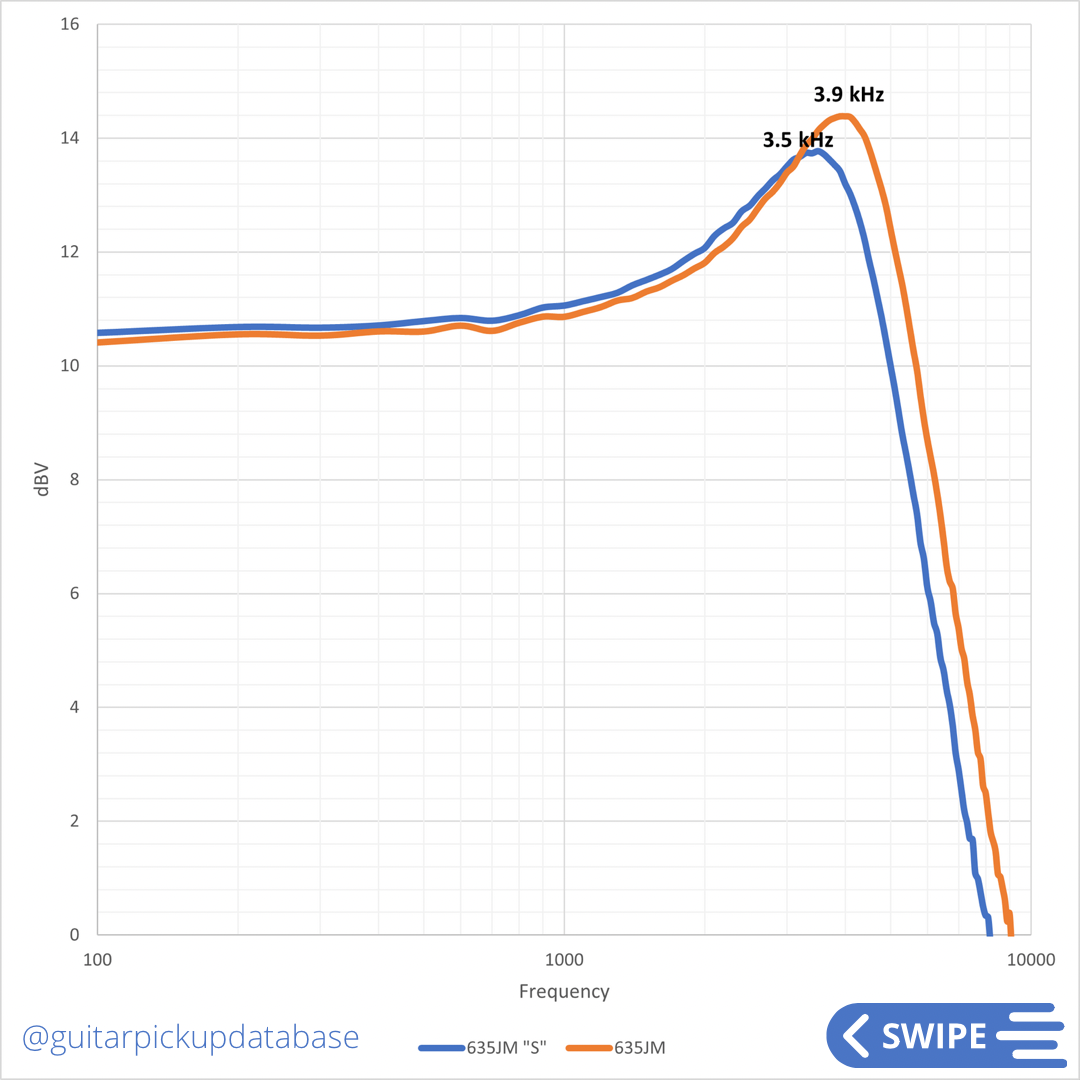gpdb
Guitar Pickup Database
- Joined
- May 13, 2022
- Messages
- 30
I'm so happy PRS released this information to the public in their latest video:
I wrote an article earlier this year explaining what I believed was PRS's TCI process (link: https://guitarpickupdatabase.com/prs-tci-pickups-explained/). Every time I heard Paul describe how pickups have a "whistle," I was sure he was referring to these frequency response graphs. I'm glad they finally put this information out there, mainly to clarify what they mean by TCI-process, but also because it validates using the frequency curves as a method for determining a pickup's sound. I have similar equipment to do these pickup measurements and have been working to measure every pickup I can. For example, here's all (except for Tremonti S) of the PRS SE Humbuckers compared:


Or even more fun, here's the USA 635JM vs. the 635JM S pickup:

I have a ton more of these - I've measured roughly 150 pickups so far from Seymour Duncan, DiMarzio, BKP, and others. I'm sorry if this sounds like an advertisement because I don't mean for it to be. I'm just incredibly excited that PRS made a video on this topic and put their reputation behind this method.
I wrote an article earlier this year explaining what I believed was PRS's TCI process (link: https://guitarpickupdatabase.com/prs-tci-pickups-explained/). Every time I heard Paul describe how pickups have a "whistle," I was sure he was referring to these frequency response graphs. I'm glad they finally put this information out there, mainly to clarify what they mean by TCI-process, but also because it validates using the frequency curves as a method for determining a pickup's sound. I have similar equipment to do these pickup measurements and have been working to measure every pickup I can. For example, here's all (except for Tremonti S) of the PRS SE Humbuckers compared:


Or even more fun, here's the USA 635JM vs. the 635JM S pickup:

I have a ton more of these - I've measured roughly 150 pickups so far from Seymour Duncan, DiMarzio, BKP, and others. I'm sorry if this sounds like an advertisement because I don't mean for it to be. I'm just incredibly excited that PRS made a video on this topic and put their reputation behind this method.


